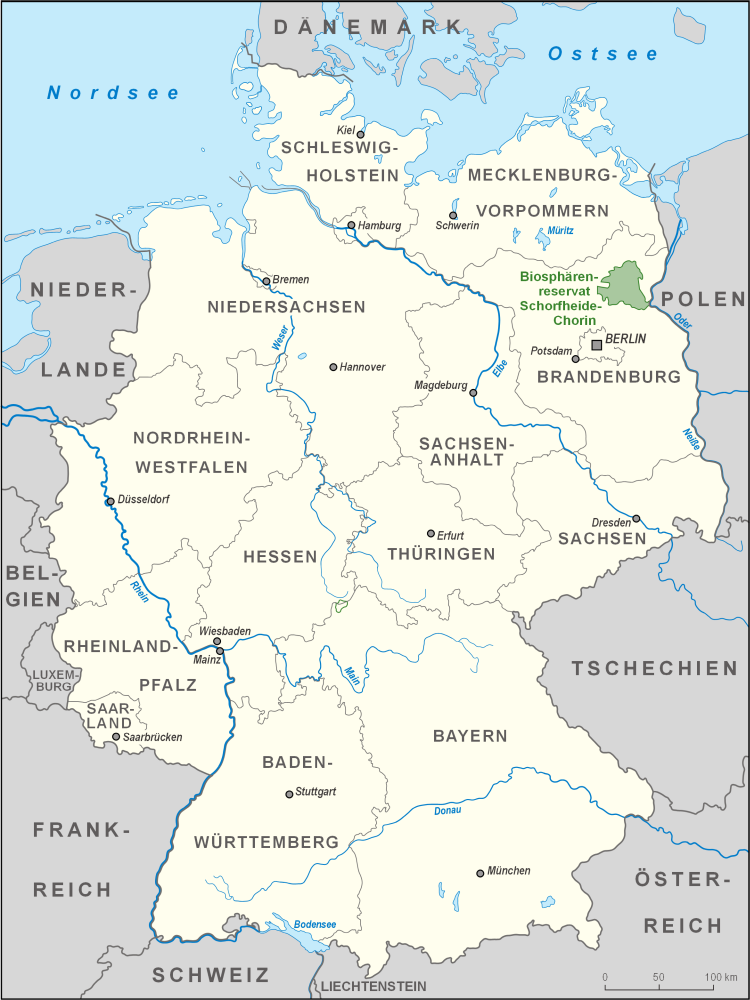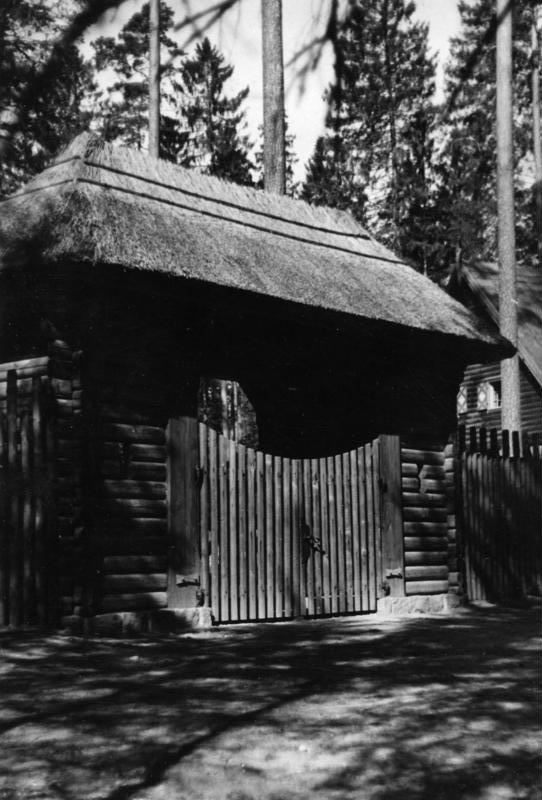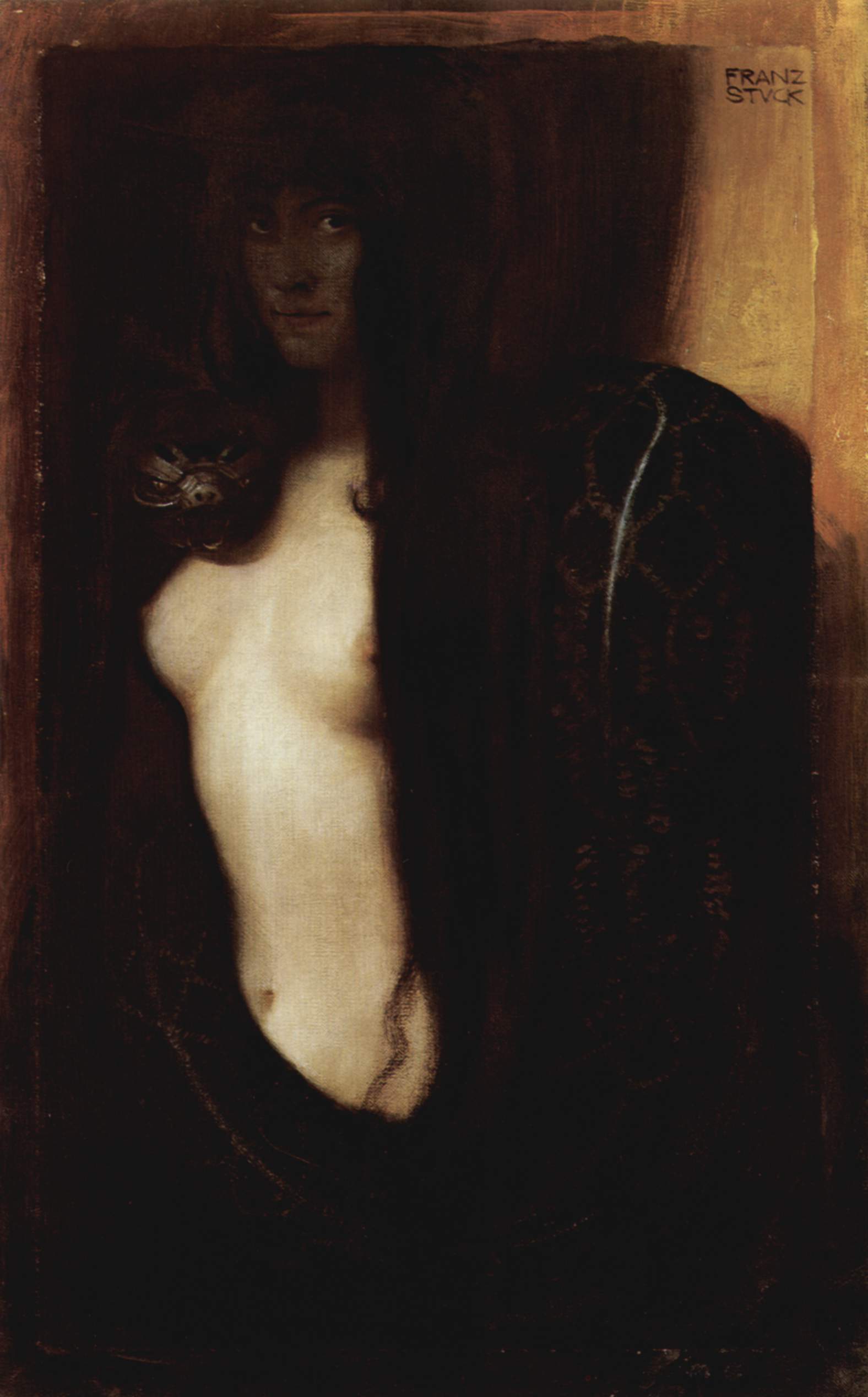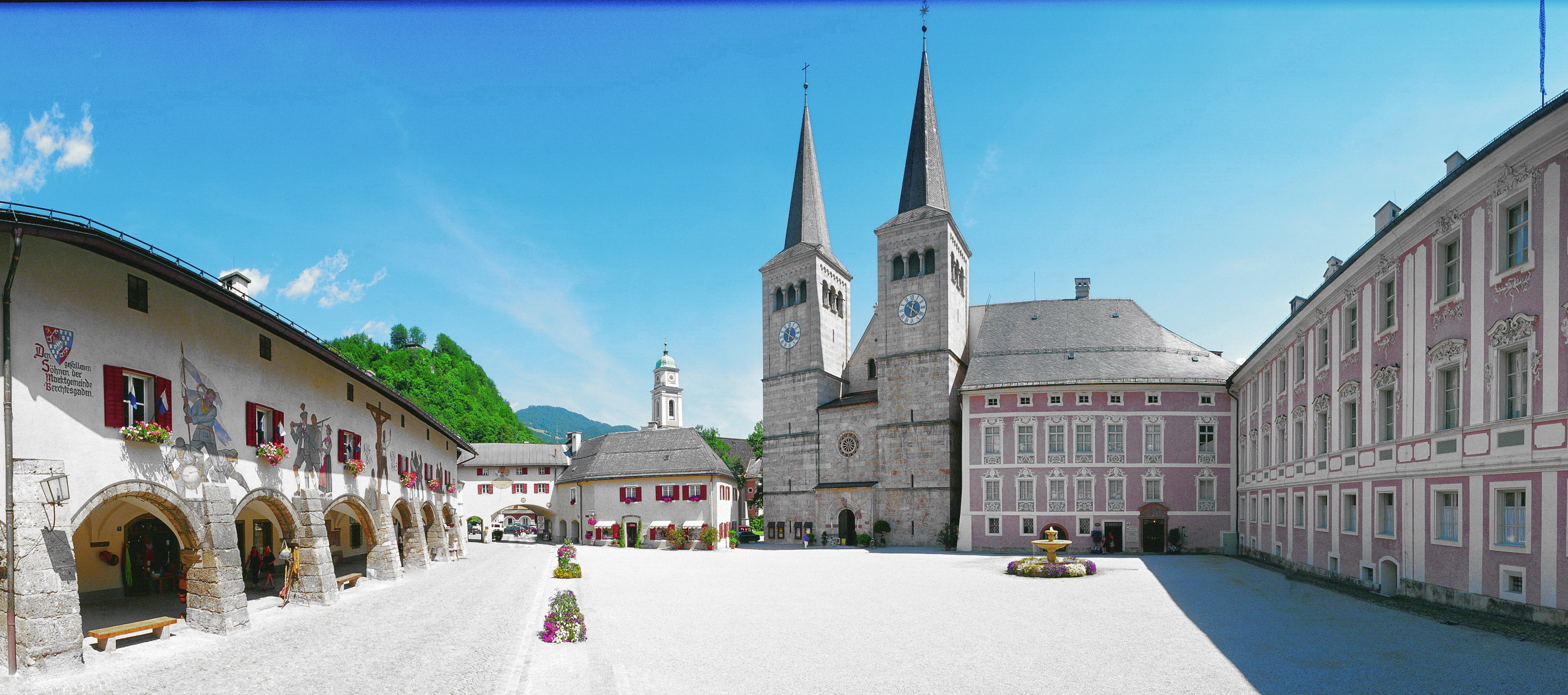|
Carinhall
Carinhall was the country residence of Hermann Göring, built in the 1930s on a large hunting estate north-east of Berlin in the Schorfheide Forest, in the north of Brandenburg, between the lakes of Großdöllner See and Wuckersee. History Named in honour of his Swedish first wife, Carin Göring (1888–1931), the residence was constructed in stages from 1933 on a large scale. In June 1933, Göring commissioned the architect Werner March to build a Swedish-style hunting lodge. Carin Göring's remains had first been interred in Sweden following her death, but were moved to Carinhall in 1934 and placed in a crypt on the grounds. On 10 April 1935, Carinhall was the venue for Göring's wedding banquet with his second wife, Emmy Sonnemann. Carinhall became the destination for many of Göring's looted art treasures from across occupied Europe. Emmyhall The ''Reichsjägerhof'', Göring's smaller hunting lodge at Rominten in East Prussia (now Krasnolesye), in the Rominten Heath, was ... [...More Info...] [...Related Items...] OR: [Wikipedia] [Google] [Baidu] |
CARINHALL Entrance Gate
Carinhall was the country residence of Hermann Göring, built in the 1930s on a large hunting estate north-east of Berlin in the Schorfheide-Chorin Biosphere Reserve, Schorfheide Forest, in the north of Brandenburg, between the lakes of Großdöllner See and Wuckersee. History Named in honour of his Sweden, Swedish first wife, Carin Göring (1888–1931), the residence was constructed in stages from 1933 on a large scale. In June 1933, Göring commissioned the architect Werner March to build a Swedish-style hunting lodge. Carin Göring's remains had first been interred in Sweden following her death, but were moved to Carinhall in 1934 and placed in a crypt on the grounds. On 10 April 1935, Carinhall was the venue for Göring's wedding banquet with his second wife, Emmy Sonnemann. Carinhall became the destination for many of Göring's Nazi plunder, looted art treasures from across occupied Europe. Emmyhall The Reichsjägerhof Rominten, ''Reichsjägerhof'', Göring's smaller hunti ... [...More Info...] [...Related Items...] OR: [Wikipedia] [Google] [Baidu] |
Hermann Göring
Hermann Wilhelm Göring (or Goering; ; 12 January 1893 – 15 October 1946) was a German politician, military leader and convicted war criminal. He was one of the most powerful figures in the Nazi Party, which ruled Germany from 1933 to 1945. A veteran World War I fighter pilot ace, Göring was a recipient of the ("The Blue Max"). He was the last commander of ''Jagdgeschwader'' 1 (Jasta 1), the fighter wing once led by Manfred von Richthofen. An early member of the Nazi Party, Göring was among those wounded in Adolf Hitler's failed Beer Hall Putsch in 1923. While receiving treatment for his injuries, he developed an addiction to morphine which persisted until the last year of his life. After Hitler became Chancellor of Germany in 1933, Göring was named as minister without portfolio in the new government. One of his first acts as a cabinet minister was to oversee the creation of the Gestapo, which he ceded to Heinrich Himmler in 1934. Following the establishment of th ... [...More Info...] [...Related Items...] OR: [Wikipedia] [Google] [Baidu] |
Hermann Göring Collection
The Hermann Göring Collection, also known as the Kunstsammlung Hermann Göring, was an extensive private art collection of Nazi Reichsmarschall Hermann Göring, formed for the most part by looting of Jewish property in Nazi-occupied areas between 1936 and 1945. Historical Context Hermann Göring was one of the most powerful Nazis. Convicted of war crimes, he was sentenced to death at Nuremberg. In 1936, he conceived the plan to convert his hunting lodge in the Schorfheide region north of Berlin into a country house, called the Waldhof Carinhall. There he had a 34-meter-long hall built, called the Grand Gallery, where he exhibited the most important pieces of his collection. Initially, Goering financed his passion for collecting visual art with gifts from industrialists in exchange for a favor of friends. During World War II Göring enriched himself on a large scale with art obtained from Jewish art collectors who were plundered and either fled or were deported to their deaths in ... [...More Info...] [...Related Items...] OR: [Wikipedia] [Google] [Baidu] |
Carin Göring
Carin Axelina Hulda Göring (née Fock; formerly Countess von Kantzow; 21 October 1888 – 17 October 1931) was the Swedish first wife of Hermann Göring. Early life She was born in Stockholm in 1888. Her father, Baron Carl Alexander Fock, was a Swedish Army colonel. The Fock family were of Baltic-German origin, which had emigrated from Westphalia to the Duchy of Estonia, then part of Sweden, in the 17th century, and matriculated into the Swedish nobility. Her paternal great-grandfather was the Swedish zoologist Bengt Fredrik Fries. Her mother, whose name was Huldine Beamish, was born in 1860 into an Irish family famous for brewing Beamish and Crawford stout in Cork. Her great-great-grandfather, William Beamish, was one of the founders of Beamish and Crawford, and her grandfather had served in Britain's Coldstream Guards. Carin's maternal grandmother, Hulda Elisabet Consantia Mosander, who was of Swedish origin, daughter of professor of chemistry Carl Gustaf Mosander, ha ... [...More Info...] [...Related Items...] OR: [Wikipedia] [Google] [Baidu] |
Schorfheide-Chorin Biosphere Reserve
The Schorfheide-Chorin Biosphere Reserve, often shortened to Schorfheide, is a biosphere reserve in the German State of Brandenburg near the Polish border. The reserve was established on 1 October 1990 following the German Reunification and is under the protection of the UNESCO Man and Biosphere Reserve Programme. It stretches over the German districts of Barnim, Uckermark, Märkisch-Oderland and Oberhavel and incorporates an area of . Notable towns are Eberswalde, Joachimsthal and Friedrichswalde. The core area of the reserve is formed by the Schorfheide forest, one of the largest cohesive woodlands in Germany. History From the Early Middle Ages until the period of the Thirty Years' War, the area fell under the responsibility of the cloister of Chorin which led to a cultivation of suitable spaces. Forest clearances took place for the sake of producing weapons for the Prussian army, but the woods were usually afforested. Large parts of the woodland were left untouched as hunt ... [...More Info...] [...Related Items...] OR: [Wikipedia] [Google] [Baidu] |
Werner March
Werner Julius March (17 January 1894 – 11 January 1976) was a German architect, son of Otto March (1845-1913), and brother of Walter March, both also well-known German architects. Werner March designed Germany's 1936 Olympic stadium. Werner March was born in Charlottenburg and died in Berlin. Life and work For the 1936 Summer Olympics in Germany, March created his most famous work, Berlin Olympic Stadium, which was on the site of the Deutsches Stadion, a stadium designed by his father, Otto March for use in the 1916 Summer Olympics (which were later cancelled after the outbreak of World War I World War I (28 July 1914 11 November 1918), often abbreviated as WWI, was one of the deadliest global conflicts in history. Belligerents included much of Europe, the Russian Empire, the United States, and the Ottoman Empire, with fightin ...). It is unclear whether March was influenced to use a more conservative design to suit Nazi tastes (claimed by Albert Speer), ... [...More Info...] [...Related Items...] OR: [Wikipedia] [Google] [Baidu] |
Reichsjägerhof Rominten
The Reichsjägerhof Rominten was Hermann Göring's Hunting Lodge in the Rominter Heath (russian: Krasny Les; Красный лес; pl, Puszcza Romincka) in East Prussia. After the German attack on the Soviet Union, it temporarily served as Göring's headquarters. History The Rominter Heath had a long tradition as a Royal Hunting ground in East Prussia. From 1890 to 1913 Kaiser Wilhelm II had visited the Heath annually, since 1891 Wilhelm owned the Rominten Hunting Lodge. In September 1933 Wilhelm refused to allow Hermann Göring to stay in the lodge, subsequently Göring built his own lodge (after Wilhelm's death Göring forced the heirs to sell the Royal lodge to him). In September 1935, Göring authorized the construction of a Hunting lodge in the Rominter Heath, which was completed in September 1936. Initially Göring planned to name the complex after his second wife Emmy "Emmyhall" like he did at Carinhall in the Schorfheide after his first wife. However the complex was n ... [...More Info...] [...Related Items...] OR: [Wikipedia] [Google] [Baidu] |
Franz Von Stuck
Franz von Stuck (February 23, 1863 – August 30, 1928), born Franz Stuck, was a German painter, sculptor, printmaker, and architect. Stuck was best known for his paintings of ancient mythology, receiving substantial critical acclaim with '' The Sin'' in 1892. In 1906, Stuck was awarded the Order of Merit of the Bavarian Crown and was henceforth known as Franz Ritter von Stuck. Life and career Born at Tettenweis near Passau, Stuck displayed an affinity for drawing and caricature from an early age. To begin his artistic education he relocated in 1878 to Munich, where he would settle for life. From 1881 to 1885 Stuck attended the Munich Academy. He first became well known by cartoons for ''Fliegende Blätter'', and vignette designs for programmes and book decoration. In 1889 he exhibited his first paintings at the Munich Glass Palace, winning a gold medal for '' The Guardian of Paradise''. In 1892 Stuck co-founded the Munich Secession, and also executed his first sculpture, '' ... [...More Info...] [...Related Items...] OR: [Wikipedia] [Google] [Baidu] |
Berchtesgaden
Berchtesgaden () is a municipality in the district Berchtesgadener Land, Bavaria, in southeastern Germany, near the border with Austria, south of Salzburg and southeast of Munich. It lies in the Berchtesgaden Alps, south of Berchtesgaden; the Berchtesgaden National Park stretches along three parallel valleys. The Kehlstein mountain (), with its ''Kehlsteinhaus'' (Eagle's Nest) is located in the area. Etymology ''Berchtesgaden'', Upper Bavaria (Achental), earlier ''Perchterscadmen'', ''Perhtersgadem'', ''Berchirchsgadem'', ''Berchtoldesgadem''; the word underwent a Latin distortion of Old High German ''parach'', Romance ''bareca'' 'hay shed'. After the basic meaning was forgotten, a variant word of Old High German ''gadem'' 'room, one-room hut' was added, implying the same meaning: 'hay shed'. Cf. Old High German ''muosgadem'' 'spice room'. There was a folk etymology that supported a derivation based on the legendary figure of ''Frau'' Perchta (Berchta), a woman (''Holle'' ... [...More Info...] [...Related Items...] OR: [Wikipedia] [Google] [Baidu] |
Buildings And Structures In Uckermark (district)
A building, or edifice, is an enclosed structure with a roof and walls standing more or less permanently in one place, such as a house or factory (although there's also portable buildings). Buildings come in a variety of sizes, shapes, and functions, and have been adapted throughout history for a wide number of factors, from building materials available, to weather conditions, land prices, ground conditions, specific uses, prestige, and aesthetic reasons. To better understand the term ''building'' compare the list of nonbuilding structures. Buildings serve several societal needs – primarily as shelter from weather, security, living space, privacy, to store belongings, and to comfortably live and work. A building as a shelter represents a physical division of the human habitat (a place of comfort and safety) and the ''outside'' (a place that at times may be harsh and harmful). Ever since the first cave paintings, buildings have also become objects or canvasses of much artistic ... [...More Info...] [...Related Items...] OR: [Wikipedia] [Google] [Baidu] |
Nazi Architecture
Nazi architecture is the architecture promoted by Adolf Hitler and the Nazi regime from 1933 until its fall in 1945, connected with urban planning in Nazi Germany. It is characterized by three forms: a stripped neoclassicism, typified by the designs of Albert Speer; a vernacular style that drew inspiration from traditional rural architecture, especially alpine; and a utilitarian style followed for major infrastructure projects and industrial or military complexes. Nazi ideology took a pluralist attitude to architecture; however, Hitler himself believed that ''form follows function'' and wrote against "stupid imitations of the past". While similar to Classicism, the official Nazi style is distinguished by the impression it leaves on viewers. Architectural style was used by the Nazis to deliver and enforce their ideology. Formal elements like flat roofs, horizontal extension, uniformity, and the lack of decor created "an impression of simplicity, uniformity, monumentality, solid ... [...More Info...] [...Related Items...] OR: [Wikipedia] [Google] [Baidu] |
Neues Museum
The Neues Museum (English: ''New Museum'') is a listed building on the Museum Island in the historic centre of Berlin. Built from 1843 to 1855 by order of King Frederick William IV of Prussia in Neoclassical and Renaissance Revival styles, it is considered as the major work of Friedrich August Stüler. After suffering damage in World War II and decay in East Germany, it was restored from 1999 to 2009 by David Chipperfield. Currently, the Neues Museum is home to the Ägyptisches Museum, the Papyrussammlung, the Museum für Vor- und Frühgeschichte and parts of the Antikensammlung. As part of the Museum Island complex, the museum was inscribed on the UNESCO World Heritage List in 1999 because of its outstanding architecture and testimony to the evolution of museums as a cultural phenomenon. Overview The Neues Museum was the second museum to be built on Museum Island and was intended as an extension to house collections which could not be accommodated in the Altes Museum. Amo ... [...More Info...] [...Related Items...] OR: [Wikipedia] [Google] [Baidu] |


.png)






.jpg)
